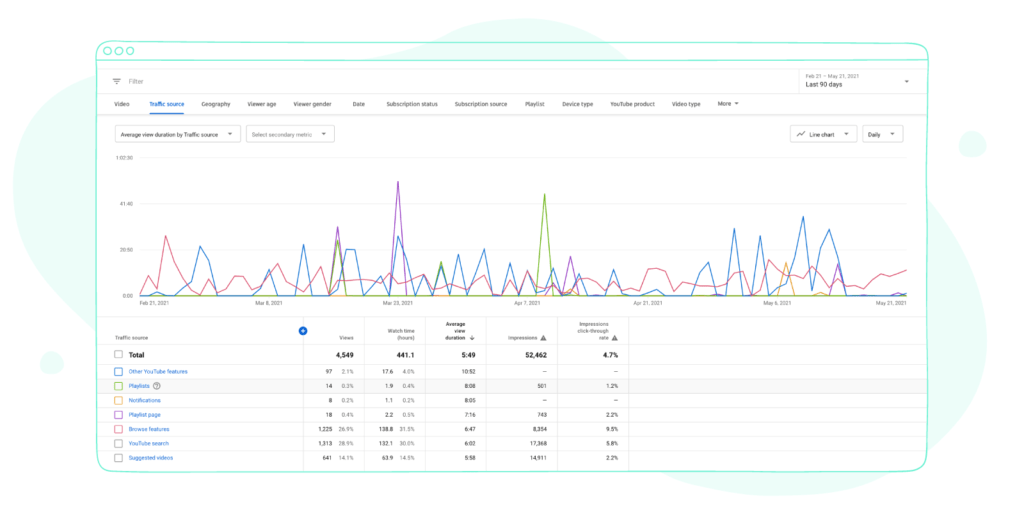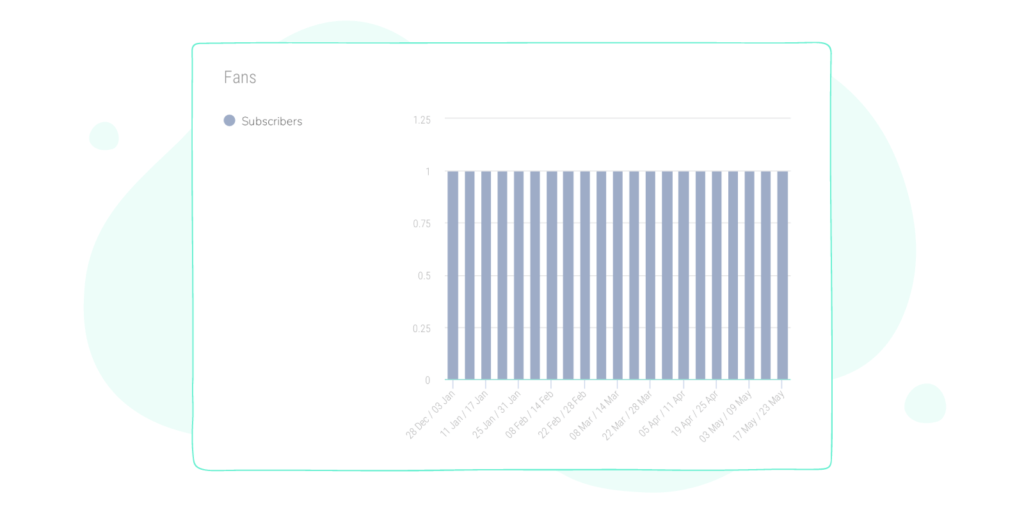So you have invested a ton of resources into your Youtube channel but you are unable to tell if they have paid off or not? Sometimes, the results of an investment may not be as obvious as we’d like. This means the fact that you haven’t recorded a surge in the number of new subscribers or likes doesn’t mean your resources are not working. Tracking these metrics successfully is the problem many entrepreneurs face and they are unable to find a practical solution.
Statistically, YouTube is the second largest search engine after Google, and over 700,000 videos are uploaded on the platform daily, but only a few of these videos enjoy good views. The key to having a higher chance of success on YouTube is understanding some critical factors before uploading your videos. Understanding YouTube concepts such as retention, audience reach, watch time, subscriber count, click-through rate, and sources of generating traffic will assist you to position your channel to perform well.
In this segment, we shall be looking at how you can measure your YouTube channel success using YouTube metrics within YouTube Data Analytics.
What are YouTube analytics metrics?
YouTube Analytics is an in-built tool for evaluating user behavior and interaction with your channel, while its metrics serve as a measurement of individual indicators making the reports. Although there are different analytics tools you can use, YouTube offers the best deal when it comes to in-built tools.
To use these metrics to improve your channel, you need to know how to check YouTube analytics.
With the aid of information gathered from the results, you can create strategies to expand your presence on the platform and increase your level of engagement. Although using YouTube Analytic Metrics may be time-consuming and demanding, it is worth the stress because it serves as a channel that provides information on evaluating and improving your channel’s performance.
Here’s how to see YouTube analytics:
- Log into YouTube
- Enter your login details to access your channel
- Click directly on your profile picture
- Choose the Analytic option provided on the left sidebar
You should now have access to four significant reports such as audience, engagement, reach and overview to track your YouTube views. When put to good use, this information can positively and significantly alter the trajectory of your Youtube channel.
How to use key Youtube metrics for tracking Youtube views
1. Pay attention to watch time

One way of knowing if your channel is performing well is through the number of views on each video you upload to your channel. Nevertheless, you should not concentrate all your efforts on just views alone. Instead, it would be best if you made an effort to analyze your video views alongside a more important metric that will determine your content performance on YouTube’s algorithm. Even though the views are vital, the time spent viewing your videos matters a lot from YouTube’s perspective.
In addition, if you realize your YouTube watch time is lower than your number of YouTube subscriber data, you will have to invest more in your video content and production quality. This will help you gain more audience to enhance your need to improve your watch time. The combination of views and watch time is a valuable indicator used to analyze your channel’s performance and visibility.
2. Monitor engagement with real-time report
YouTube has a policy of verifying and removing low spammy views from the total. Through the real-time report, you have an in-depth insight into tracking YouTube views and video performance of your video reach in the last 48 hours and 60 minutes, respectively. By paying attention to this tab on the Analytic dashboard, you will have in-depth knowledge of your video performance. You can also help you discover if your video has been shared on another platform outside YouTube, including Facebook, Twitter, or Reddit.
Furthermore, if you find out there has been an increase in your real-time report, this shows some of your videos are shared outside YouTube. To find out where the videos are shared, use Google query to find out the opportunity to engage. You can also keep track of your competitors. With competitive benchmarking, you can gain access to relevant data that will set your YouTube channel apart from others. This tool also helps you generate a competitor analysis report, giving you an in-depth insight into your competitors’ growth rate and how you can use this information to your advantage.
3. Identify your traffic sources

When analyzing your YouTube videos stats, tracking your YouTube views and collecting the necessary data is essential to evaluate your channel performance. From the YouTube Analytics panel, there is a provision for identifying traffic source pages. From there, you will be able to access YouTube subscriber graphs that contain information for your YouTube subscriber data and viewers’ data. This source is used in explaining how your viewers are finding your videos.
It is essential to analyze all your sources for traffic generating sources to find out which one is beneficial to your channel and helps you grow your Youtube subscribers. So, it is crucial you don’t concentrate on figures because each source has its traffic weight. For instance, if you realize your primary source of generating traffic is through YouTube search, you should optimize your content with keywords that might make people discover your videos without issues.
Furthermore, by identifying the demography of your subscribers, you will be able to know the right video promotion strategy that is suitable to maintain traffic to your channel.
4. Monitor your subscriber analytics

YouTube subscriber analytics is used to monitor changes in the level of your YouTube subscriber data. With the YouTube subscriber, you can quickly identify existing and potential customers interested in your products or services. In addition, by using YouTube subscriber analytics, you can know the overall reach of your videos and how each uploaded video contributes to how you gain and lose subscribers on your channel.
Conclusion
The golden rule is to increase your brand visibility, and the number of people who see your video is proportional to your subscriber’s strength. So, the higher your subscriber’s rate, the more exposure your brand gets. Ensure your content is catchy, on-trend, and in-demand, and your social media team can help you navigate this aspect better, as this will increase your chances of gaining more subscribers on YouTube. Also, you must pay attention to your target audience and create content that appeals to their sentiments. Now you know how to use YouTube tracking with YouTube channel metrics to your advantage.
With Youtube tracking, you can know your subscriber ratio for a particular video by dividing the number of views garnered from the video by the net subscriber gain. Your Youtube channel metrics are a great way to have a leg up on the competition. Invest in Youtube search analytics today and you will be amazed at the results.




